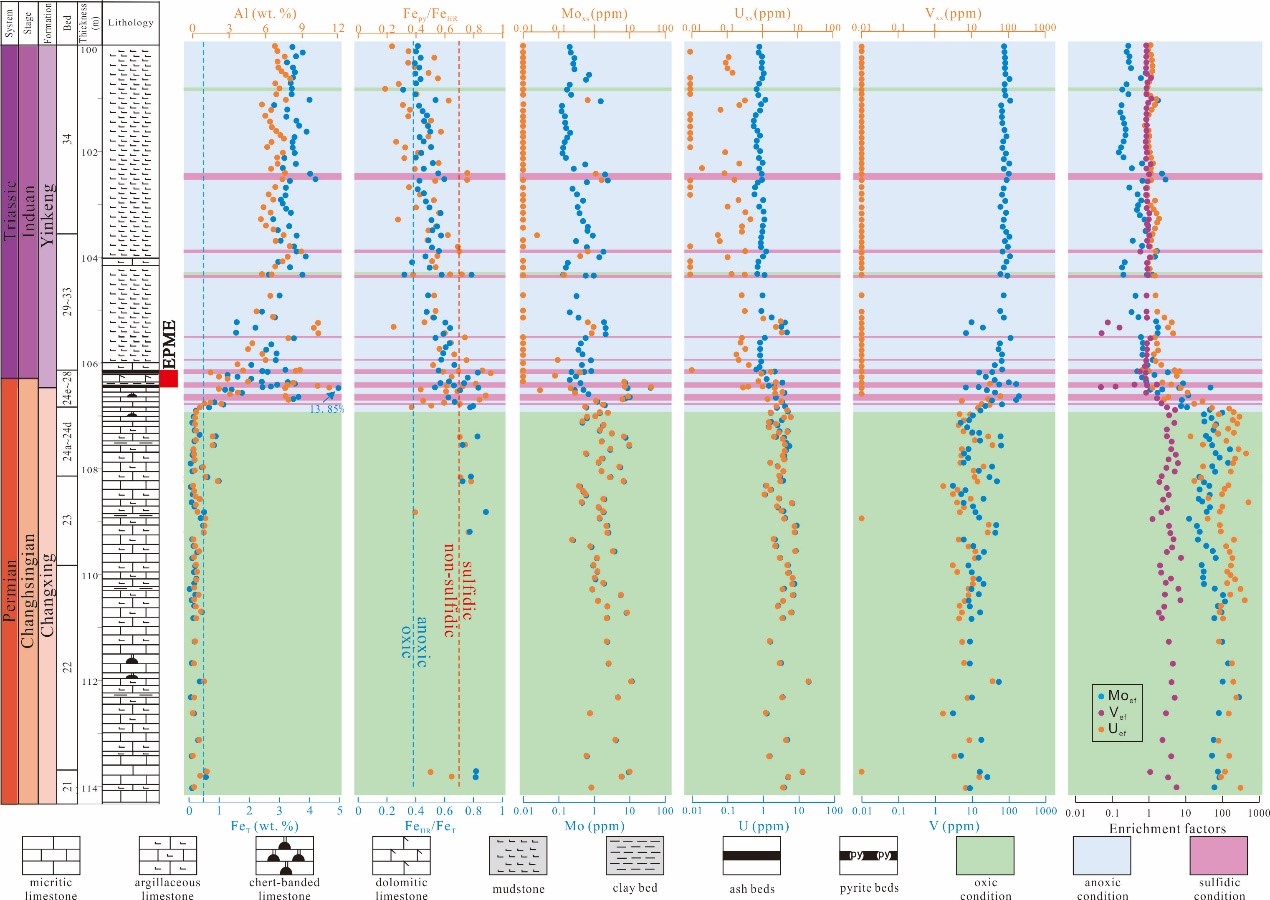The end-Permian marine extinction (EPME) eliminated >80% of species globally, making it the most severe extinction of the Phanerozoic. Anoxia and euxinia are potential kill mechanisms that may have contributed to this biotic crisis. However, redox changes in the atmosphere-ocean system are likely to have been complex, with both the vertical location of the oxic-anoxic boundary (in the water column or sediments), and the total area or volume of anoxic and euxinic water in the global ocean changing over time.
Recently, an international research team from the Nanjing Institute of Geology and Palaeontology of the Chinese Academy of Sciences, Western Carolina University and Nanjing University reported a series of geochemical analyses on iron speciation and major and trace element data from 141 samples of the Meishan-1 core, which was drilled at a site 550 m to the west of the Meishan D section. The research results have been published online in Palaeogeography Palaeoclimatology Palaeoecology.
Iron speciation results, in combination with authigenic concentrations and enrichment factors of redox-sensitive metals (Mo, V, and U), and previously published macrofossil, trace fossil, and bioturbation evidence, suggest that: 1) Beds 21-24d were deposited beneath a predominantly oxic water column, 2) Beds 24e-28 were deposited under a persistently anoxic watermass with intermittently euxinic bottom water, and 3) Beds 29-34 were deposited under primarily ferruginous conditions. Excess fractions and enrichment factors of U, V and Mo in the anoxic and euxinic intervals of the Meishan-1 core suggest that authigenic precipitation of redox-sensitive trace metals mainly occurred before and during the EPME, with nearly no detectable authigenic U, V, or Mo accumulating after the EPME.
The new results, along with published U, V and Mo concentrations from across the Neotethys, Paleotethys, and Panthalassic Ocean basins, indicate that oceanic trace metal reservoirs were depleted before and during the main extinction interval. This depletion of oceanic trace elements suggest a spatial expansion of both anoxic and euxinic watermasses prior to and during the EPME. The apparent coincidence in timing between the mass extinction and the areal expansion of anoxic and euxinic watermasses suggests that these factors played important roles in the loss of marine biota around the PTB, through oxygen deprivation and H2S toxicity.
This work was supported by the Strategic Priority Research Program of Chinese Academy of Sciences, the National Natural Science Foundation of China and the Key Research Program of Frontier Sciences of the Chinese Academy of Sciences.
Reference: Xiang, L., Zhang, H.*, Schoepfer, S.D., Zheng, Q.F., Yuan, D.X., Cai, Y.F., Cao, C.Q., Shen, S.Z., 2020. Oceanic redox evolution around the end-Permian mass extinction at Meishan, South China. Paleogeogr. Paleoclimatol. Paleoecol. 544, 109626. https://doi.org/10.1016/j.palaeo.2020.109626

Stratigraphic distributions of selected redox proxies around Permian-Triassic boundary in the Meishan section
Download:
